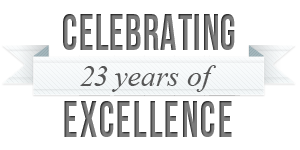The Pandemic Helped Propel Work into a New Future
When we launched the firm in late 2018, our mission was to be the law firm of tomorrow. One key component of forming a nimble and progressive law firm was to value talent over brick and mortar. So, when the pandemic hit, and remote work became the norm, we were ahead of the curve; we were used to managing both our team and client needs remotely.
In terms of permanency, I think the hybrid work model will become more or less institutionalized—if it hasn’t already. Recent surveys show that employees prefer having the option of working from home. Forward thinking employers should appreciate this evolution in how we work, and many are making adjustments to meet the needs of the new work environment.
Certainly, I don’t think we’ll be going back to as many in-person meetings as pre-pandemic. There’s still value in the occasional face-to-face meeting, but it will no longer be the norm.
Accommodating a remote workforce allows for greater diversity and inclusion—we are not prioritizing lawyers who fit into “traditional” frameworks for how a workforce must engage with the profession. The bottom line is that we reward talent for exceptional work—no matter where our lawyers are working. Our team appreciates having the flexibility to work remotely, and the resulting boost in morale helps us produce great work for clients.
We have also tried to create safe opportunities for groups within our firm to gather in person for projects or social events that help instill a feeling of community. We are able to recruit and retain better talent by facilitating remote work. Think about it. Would we rather have an exceptional lawyer who happens to not live near one of our offices, or a less talented person just because they live near our brick and mortar?
Having said all that, there are still significant challenges that both employers and employees face as we navigate the new normal. Every business is different; some organizations may be more adept than others at embracing the hybrid workforce. And it’s important not to dismiss legitimate concerns around things like collaboration and productivity, among other sticking points.
Finally, while we’ve been fortunate enough to foster true collaboration and deliver value to our clients virtually, I realize that many companies continue to struggle on this front—a challenge that I think will ultimately spawn even better technology, business strategies, and processes tailored to the new hybrid workforce.
The pandemic has forced this trend, but the result may be creating happier, more productive teams, who can achieve a better work-life balance. There’s no doubt the workforce is changing, and as always, the most successful companies will adapt to and thrive on those changes.







